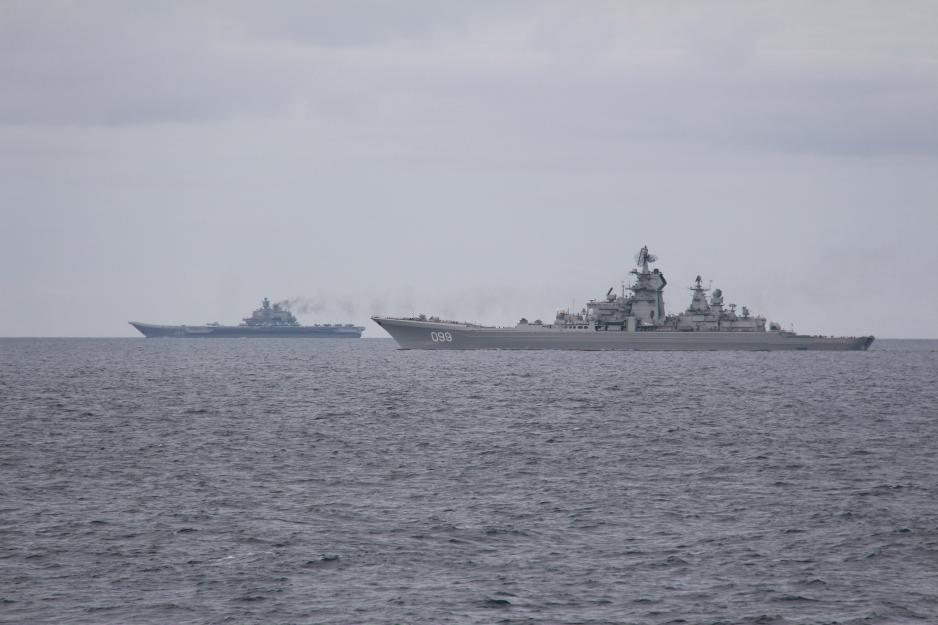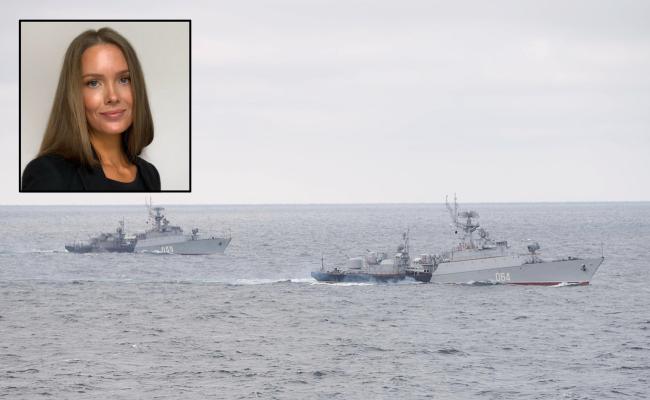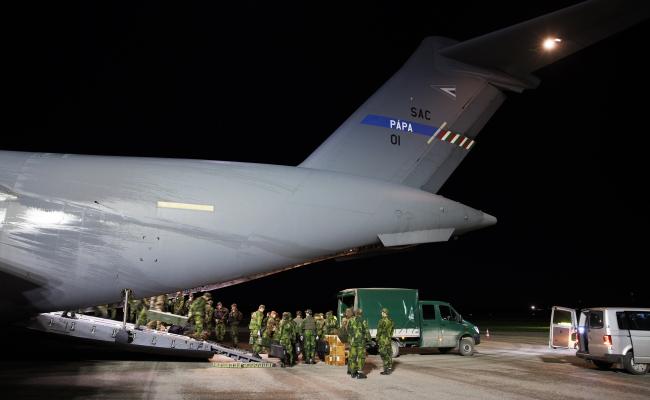Ukraine Conflict: Maritime Areas in the High North Vulnerable if Situation Escalates

Professor Katarzyna Zysk says that Russia is unlikely to be interested in spreading its attention in other strategic directions for now, especially as it uses parts of the Northern Fleet to fight the war in Ukraine. (Archive Photo: Norwegian Armed Forces).
Russia is unlikely to be interested in spreading its attention in other strategic directions for now. But if escalation occurs to involve NATO, Russia may aim at controlling parts of the Barents Sea, as protecting the strategic submarines are among its top priorities, says Professor Katarzyna Zysk at the Norwegian Institute for Defence Studies.
Early Thursday morning, Russian military forces attacked several targets inside Ukraine. Explosions are heard across the country.
As CNN reports, the two self-proclaimed "people's republics" of Donetsk and Luhansk in the breakaway Ukrainian region of Donbas, had "turned to Russia with a request for help," Putin said. To answer that call he was launching a "special military operation."
Russian President Vladimir Putin said on Monday that the country recognizes the independence of two breakaway regions in eastern Ukraine.
During the NATO Secretary General's press briefing this afternoon, Mr Stoltenberg argued that "this is a new normal for European security".
Protecting strategic submarines
While the war Russia has started in Ukraine does not involve any NATO members for now, it could have several implications for the High North.
Professor Katarzyna Zysk at the Norwegian Institute for Defence Studies (IFS) says to High North News that for Russia, the High North is its border with NATO. She believes Moscow has various contingency plans ready, depending on how the military-political situation will be unfolding and what the Western responses to the Russian aggression will be.
"Protecting the strategic submarines (SSBNs), their operational area and infrastructure, and other crucial assets deployed with the Northern Fleet just across the border with Norway, remains among the top priorities", she says.

Katarzyna Zysk is professor of international relations and contemporary history at the Norwegian Institute for Defence Studies (IFS), which is part of the Norwegian Defence University College (NDUC) in Oslo. At the IFS, she also served as Deputy Director (2017–21), Head of Centre for Security Policy (2019–21) and Director of Research (2017–21). (Photo: NDUC)
Misunderstandings and escalation
Professor Zysk is clear about one thing: Neither NATO nor Russia want a war with each other. However, both sides will bolster defence and deterrence.
Furthermore, she adds that there is a higher risk of misunderstanding, miscalculation, error and unintended escalation under conditions of growing tensions stemming from the ongoing Russian attack.
"In case of aggravating of the conflict to involve NATO, we may see a deployment of the Russian bastion defence, which is aimed at ensuring the survival and freedom of action of the strategic submarines (SSBNs) through several layers of defences involving a combined use of naval, land and air-based capabilities", Zysk says and continues:
"Russia may aim to take control over maritime areas and other domains in parts of the Barents Sea and the Northern Norwegian Sea, while attempting to deny control for the adversary further south, where Russia would be unlikely to establish control. Geographically, the bastion concept includes the maritime approaches to NATO member Norway, which is a cause for concern."
Russian strategic thinking
Russia is unlikely to be interested in spreading its attention to other strategic directions for now, especially as it uses parts of the Northern Fleet to fight the war in Ukraine, Zysk notes. However, she adds that we may still see more military activity in the European Arctic region as a mean of deterrence.
She underlines that the High North (the European Arctic) is closely intertwined with other security spaces in Russian strategic thinking. Russia sees the various regions along its Western perimeter (the High North, the Baltic and the Black Sea regions) as interconnected security spaces.
That was for instance demonstrated in various annual large-scale exercises such as Kavkaz in 2012, Zapad in 2013, Kavkaz in 2016 and Zapad in 2017, the Professor notes.
"In case of an escalation into a regional conflict, the Northern Fleet's assets may take on an active role not only to deploy the bastion defence, but also as a mean of a horizontal and vertical escalation, to pressure the opponent from another strategic direction. In addition, the capabilities in the High North will be used in a conflict outside the region also for pragmatic reasons," she notes and adds:
"Despite the largely successful military modernization, Russia’s military capability remains limited. Hence, there are already reports that Russia has sent capabilities from the High North to attack Ukraine, including assault landing ships, as well as a part of the 200th Motor Rifle Brigade belonging to the Northern Fleet. The latter was also deployed in Ukraine in 2014 to support the illegal annexation of Crimea".




